The AAHA-AVMA Preventive Care Guidelines and Opportunity Survey Tool
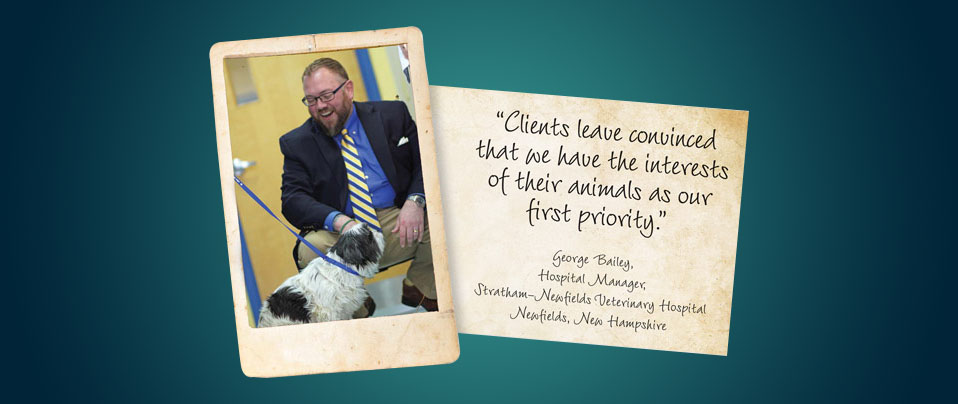
Delivering Multiple Benefits
“We received some valuable feedback from our clients when we invited them to use The Opportunity survey tool,” comments George Bailey, Practice Manager at the Stratham-Newfields Veterinary Hospital (SNVH) in Newfields, New Hampshire. “But what also impressed us was a number of important, unanticipated benefits of using the survey that strengthened our healthcare team and its relationship with SNVH clients.”
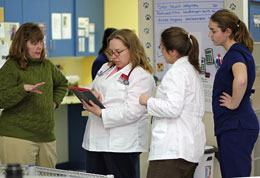
The Opportunity survey tool is the ideal first step for veterinary practices to take in assessing how well they communicate the value of preventive healthcare to their clients. “Unfortunately, many pet owners consider preventive care exams to be optional,” Mr. Bailey says. “They believe that professional veterinary care is needed only when their pet is really sick or hurt. The trouble with that approach is that when the pet owner realizes the animal is sick, it’s usually an advanced case. What could have been a preventive care case becomes a matter of urgent care. This often involves greater expense for the pet owner and greater risk of an unfavorable outcome for the pet.” It is also a scenario for sporadic or occasional use of a veterinarian’s services.
As its name implies, The Opportunity is designed to help companion animal veterinarians identify ways to enhance their practices by emphasizing delivery of preventive healthcare. According to George Bailey, “The preventive healthcare message is the principal driver for clients to obtain regular veterinary services instead of coming to us only for vaccinations and urgent care.”
How the survey works
The Opportunity survey, accessed on the Partners for Healthy Pets web site, is one of the foundational tools for helping veterinary practices improve communication skills, enhance client relationships and advance the overall quality of regular preventive healthcare. Clients who complete the anonymous online survey share their understanding of the communication they receive from the veterinary practice team about specific preventive healthcare topics. Practice team members give answers to the corresponding survey questions that their clients answered. The paired responses allow the practice to identify “communication gaps” that can be bridged to more effectively advocate and explain the importance of preventive pet healthcare.
“Over a two-month period as clients left our hospital we gave them a written invitation to take The Opportunity survey,” George Bailey explains. “We received a response rate of just under 20%, about what is typical for customer satisfaction surveys.” The entire SNVH healthcare team also completed the survey, allowing client and staff responses to specific questions to be compared.
What The Opportunity survey revealed
SNVH is an established, successful AAHA-accredited primary-care practice that recently received the AAFP’s Cat Friendly Practice certification. Practice owner Dr. Sonnya Dennis, an ABVP diplomate, and her associate Dr. Nicole Young, a certified veterinary acupuncturist, have more than 20 years of collective professional experience. In an indication of strong client loyalty to the 14-member healthcare team, SNVH is a six-time winner in the Market Surveys of America “Best Veterinarian” category for the Stratham-Exeter area of New Hampshire. Thus, it was not surprising that The Opportunity survey confirmed that the SNVH healthcare team was effectively communicating its practice philosophy to its clients.
“We know from talking to other practitioners who’ve used The Opportunity survey that it often reveals communication gaps between clients and the healthcare team,” Mr. Bailey says. “We were gratified when the post-survey report told us that there was a very close correlation between the healthcare messages that we deliver and what clients receive. There’s always room for improvement, but it was good to know that we were by-and-large on the right track. In addition, the survey experience had some other positive outcomes that we didn’t expect.”
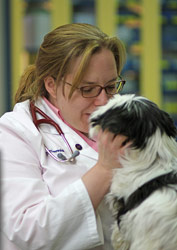
One of the added benefits of the survey was that it re-energized the SNVH staff to renew its focus on preventive healthcare. The survey process and its primary objective, to enable the practice to effectively communicate preventive healthcare, was discussed at length during regular staff meetings. “That dialog got our entire staff to re-focus on the importance of preventive medicine, how to communicate it to our clients, and how it supports our core mission of compassionate care,” Mr. Bailey says. “The survey ended up being a tool that helped us keep our practice culture where we want it.”
Mr. Bailey also believes that clients who took the survey were impressed by its technology and, by extension, with the SNVH’s reputation for being a progressive, state-of-the-art practice. “The survey itself is very easy to navigate, and our clients told us they had no problems completing it,” he says. “Asking for our clients’ opinion tells them that we’re a learning organization interested in continuous improvement and the optimum welfare of their pets he says,” he says. “I believe clients who took the survey came away impressed and with a stronger commitment to our practice.”
The Partners for Healthy Pets web site: Drawing clients in
George Bailey, Practice Manager at Stratham-Newfields Veterinary Hospital was instrumental in the design of his practice’s web site and its online outreach to clients. As an experienced consumer of electronic media, he considers the attractiveness of the Partners for Health Pets web site to be one of its compelling features, beginning with the ‘Partners’ logo. “The image of a veterinarian and a pet owner reaching across to join hands above a dog and cat is subtle, but it conveys an important message: The pet owner is a full partner in the welfare of his or her animal, co-equal in importance with the veterinarian. The overall visual appeal of the web site and the survey itself draw clients into participating.”
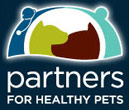
Although the survey asks for responses to more than 80 items, its to-the-point phraseology and appealing design allow for rapid completion, usually in about 10 minutes. “The professional appearance of the survey is indicative of the overall high quality of all the components of the Partners for Healthy Pets Toolbox,” Mr. Bailey adds.
Another benefit of The Opportunity survey that the SNVH staff discovered was that it created enthusiasm for using other resources in the Partners for Healthy Pets Toolbox. The survey experience gave Drs. Dennis and Young and George Bailey a first-hand look at how the Toolbox can elevate the level of healthcare provided by the practice. In the eyes of the SNVH healthcare team, being exposed to the ‘Partners’ Toolbox was similar to a continuing education activity presented by experts. “In particular, we got excellent benefit from the Communications tool and the Internet and Social Media tool, “George Bailey comments. “The entire staff watched the Words that Work videos embedded in the Communications tool. The videos and scripts for client discussions offer great tips for helping staff members reset the conversation from ‘selling veterinary services’ to asking for consent to safeguard the health of their pets.”
“Another excellent resource is the Feline-Friendly Practice tool on the ‘Partners’ web site,” Dr. Sonnya Dennis comments. “Being CFP certified has helped the whole healthcare team understand the special needs of cats and to implement ways of working more effectively with an underserved pet population. For practices that want to focus on managing their feline patients, I would strongly recommend the Feline-Friendly Practice tool.” The web site includes pre-recorded web conferences, educational videos and a direct link to the AAFP Cat Friendly Practice Program. Each web conference offers one hour of CE credit.
Dr. Dennis and Mr. Bailey’s strategy is to have a one-year rollout of the various resources in the ‘Partners’ Toolbox. “We think it’s important to introduce the various tools at a reasonable rate so that the staff isn’t overwhelmed,” Dr. Dennis comments. “The Opportunity survey was the first step.”
The SNVH preventive care exam
The survey experience also validated SNVH’s approach to preventive care exams. “As a primary-care practice, the goal at SNVH is to devote at least half of the practice’s appointment book to regular preventive care exams,” Mr. Bailey points out. “As Practice Manager, I know that the 50% ratio represents a healthy business model that will sustain a veterinary practice. For most pets, we recommend an annual preventive care exam. For senior dogs and cats, which represent about a third of our patients, we recommend an exam every six months. A high percentage of our clients comply with that exam schedule, which indicates that clients are responding to our emphasis on the importance of preventive care. The response to The Opportunity survey confirmed that our staff was effectively making the case for preventive healthcare.”
Mr. Bailey offers a convincing rationale for semi-annual preventive care exams for senior pets. The canine and feline metabolism ages these animals at a rate several times faster than the human biological clock, he explains. “A six-month period for an older dog or cat can be equivalent to three to four years of the human lifespan. Would you tell your 75-year old parent that it’s okay to see a doctor only every three or four years? No one would suggest that.”
The SNVH preventive care exam typically runs longer than what occurs in most companion animal practices, as long as 40 minutes in some cases. The exam uses the AAHA-AVMA Canine and Feline Preventive Healthcare Guidelines as a template and generates detailed notes in the patient’s record. Included is an in-depth discussion with the pet owner. Topics range from observations on the pet’s activity and behavior to its role as a family member. Client education is often a feature of the discussion. The clinical staff always explains the importance and benefits of preventive healthcare and probes for risk factors that can result in chronic or acute disease. Mr. Bailey points out that ‘Partners’ web site includes a Guidelines Implementation tool that can help practices apply the preventive healthcare guidelines.
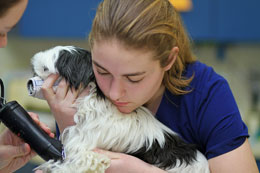
“When the preventive care exam is over, our clients understand the reasons for our recommendations, and compliance is high,” notes George Bailey. “Clients also leave convinced that we have the interests of their animals as our first priority.”
Comments posted to the Internet by SNVH clients confirm their belief in the value of a strong preventive healthcare plan. One client who lives 60 miles away in Portland, Maine said, “At 14 (years of age), our dog still acts like a puppy. No one can believe she is 14. We have taken her to SNVH since she was eight weeks old.” Another reported, “I have several elderly animals as well as two-day olds. (SNVH) assisted me with the total care throughout the life of my animals.” A third client’s cat was diagnosed with atrial fibrillation “during a routine physical examination” at SNVH and effectively treated with a beta-blocker.
Taking the first step
“The online survey is just one resource in the ‘Partners’ Toolbox,” Mr. Bailey notes. “A practice of our size could never afford to hire the consultants and agencies that created these top-notch, professionally produced materials.”
Based on the experience at SNVH, veterinarians who take advantage of the Toolbox resources can expect a number of important benefits. These include identifying communication gaps with clients, renewing the healthcare team’s focus on preventive care, and projecting a professional image in the eyes of the practice’s clients. In George Bailey’s words, “That’s a terrific value for veterinarians who want to make preventive care the foundation of their practices and their business model. I strongly recommend visiting the Partners for Healthy Pets web site and exploring the Resources Toolbox.”
Tools of Interest
The following tools helped this hospital:
Read what your colleagues are saying about their experiences using specific Partners for Healthy Pets tools.
Success Stories are testimonial case studies of the benefits realized by patients and practices as a result of utilizing the Resources Toolbox!

